 Computer Tutorials
Computer Tutorials Troubleshooting
Troubleshooting BIOS settings after computer assembly? The computer has just been assembled, how to set up the BIOS?
BIOS settings after computer assembly? The computer has just been assembled, how to set up the BIOS?To ensure that your newly assembled computer runs smoothly, it is crucial to configure the BIOS settings correctly. BIOS, or Basic Input/Output System, controls startup programs and hardware settings when the computer is turned on. This article will guide you step-by-step through setting up the BIOS after your computer is assembled, from accessing the BIOS interface to configuring key settings to optimize your computer's performance.

What are the BIOS settings after the computer is assembled?
In bios, just set the hard disk as the first startup item.
The computer has just been assembled, how to set up the BIOS?
Steps:
1. Assemble a new computer, turn it on and click the Delete key;
2. Enter the motherboard BIOS and enable AHCI of the SATA interface;
3 , set the optical drive startup or U disk startup, click F10 to save the settings;
4. Restart, use the CD system disk or U disk startup disk to install the WIN7 Ultimate 64-bit SP1 system;
5. After the system is installed, use the CD that comes with the motherboard to install the relevant hardware drivers and motherboard-specific software. If you have an independent graphics card, use the CD that comes with the graphics card to install the graphics card driver;
6. Plug in the network cable, connect to the network correctly, and you can access the Internet. Finally, download and install 360 Security Guard, run it for immediate physical examination, download and install system patches and optimize them.
How to make basic settings and BIOS settings for a newly assembled computer?
Steps:
1. Assemble a new computer, turn it on and click the Delete key;
2. Enter the motherboard BIOS and enable AHCI of the SATA interface;
3 , set the optical drive startup or U disk startup, click F10 to save the settings;
4. Restart, use the CD system disk or U disk startup disk to install the WIN7 Ultimate 64-bit SP1 system;
5. After the system is installed, use the CD that comes with the motherboard to install the relevant hardware drivers and motherboard-specific software. If you have an independent graphics card, use the CD that comes with the graphics card to install the graphics card driver;
6. Plug in the network cable, connect to the network correctly, and you can access the Internet. Finally, download and install 360 Security Guard, run it for immediate physical examination, download and install system patches and optimize them.
How to enter bios when assembling a computer?
Before entering the BIOS, you need to make sure that the computer is completely shut down and powered off. Here are several common ways to enter the BIOS:
1. Use shortcut keys: Most computer manufacturers will display a prompt message at startup telling you which key to press to enter the BIOS settings. Usually the F2, F10, F12 or Delete key. After pressing the appropriate keys, you should be able to see a screen with information about your computer's hardware and BIOS settings.
2. Use the button on the motherboard: Some computer motherboards have a dedicated button for entering BIOS settings. This button is usually labeled "BIOS" or "UEFI". After pressing the button, you should be able to see a screen with information about your computer's hardware and BIOS settings.
3. Through Windows system: If your computer is equipped with Windows operating system, you can also open the Run dialog box by pressing the Windows key R, then enter the "msconfig" command and press the Enter key. In the System Configuration window, select the Boot tab and click Advanced Options. Here you can select the operating system to boot and the associated drivers and settings. If you need to enter the BIOS settings, click the "Edit" button and select the appropriate options.
Please note that different computer brands and models may have different methods of entering BIOS setup. Therefore, it is recommended that you check your computer user manual or online documentation for more detailed guidance.
How to enter bios when assembling a computer?
To enter the BIOS, you need to press specific keys when turning on the computer, usually during the computer's power-on self-test (POST) process. Different computer manufacturers, computer brands and BIOS types may be different, but the following is the method that can be used in general:
1. Turn on the computer. When you see the computer startup logo, press immediately Press F2, F12, Delete, Esc and other keys.
2. If you are not sure which key is pressed, please check which key your computer starts sending messages continuously. For example, some computers continuously output "Press F2 to enter Setup" starting from the F2 key.
3. If you miss the startup logo, please restart your computer and try again.
4. If you don’t know what to do after entering the BIOS, please read the information displayed on the screen carefully, especially the key parts with red blocks. They will generally tell you how to change settings, save and exit. BIOS or other related prompts.
Please note that making any changes in the BIOS carries certain risks. If you are not sure how to operate, please consult a professional or refer to the relevant guide.
Do I need to set up the BIOS for the computer I just assembled?
Setting the BIOS by the installer is an installation specification and a very natural behavior. Now the main purpose of setting up the BIOS is to set the date and time, turn off the floppy drive, allocate the video memory capacity of the integrated graphics card, set the parameters of various accessories, and set up the optical drive startup to ensure hard disk partitioning and system installation operations. In fact, there is no need to set up a new computer now. For novices, there is no need to set up the BIOS of the motherboard of a newly bought computer. You can just partition and install the system. Of course, if you have computer basics, set up It doesn’t hurt to take a moment
How to enter the BIOS settings of the computer that has just been assembled?
Assembled computers generally use the DEL key or TAB key to enter the BIOS. The following are several ways to enter bios on a computer:
Lenovo (press F12 when starting h and restarting)
thinkpad (press F1 when starting and restarting)
HP (Press F2 when starting and restarting)
SONY (Press F2 when starting and restarting)
Dell (Press F2 when starting and restarting)
Acer (Starting and press F2 when restarting)
Toshiba (press ESC and then F1 when booting coldly)
Compaq (press F10 when the flashing cursor appears in the upper right corner after booting, or press F10 when booting)
Fujitsu (press F2 when starting and restarting)
Most domestic and Taiwanese brands (press F2 when starting and restarting)
How to ez BIOS for ASUS assembled computers Set up USB drive to boot?
1. Make a bootable USB flash drive;
2. After shutting down the computer, insert the bootable USB flash drive, turn it on, and press ESC when the ASUS screen appears on boot, and the system will prompt you to select startup options. , you can check whether the USB boot device is recognized in this interface;
3. Please press the F2 key to enter the BIOS when the ASUS screen appears during boot, select the startup item under the BOOT menu, and check whether there is USB support. The device starts. If there are no relevant options, it is confirmed that USB device startup is not supported. If there are relevant options but cannot be started, please check whether the USB flash drive is in a supported format;
4. You can use third-party tools to make the USB flash drive a bootable USB flash drive.
After assembling the computer, you need to enter the BIOS settings. How to set it up so that it can start normally?
(1) For an assembled computer, just press DEL to enter the BIOS and set the first startup item to the hard disk or optical drive to start the computer normally.
(2) The specific setting method is as follows: Since the motherboard is divided into two categories, both categories are listed.
The first type is the Award 6.0 type motherboard: it is set like this: when the computer has just started: press the "DEL" key or the "Delete" key and don't let go (of course, some computers also have ESC, F1 , F2. F4, F11, but most computers are DELETE.) until the BIOS setup window appears, and then use the arrow keys to find "Advanced BIOS Features---BOOT Device Priority---1St BOOT Device (1ST FLOPPY DRIVE stands for Floppy drive SATA: SM-WDC WD5000 represents the hard disk CD/DVD: PS-ATAPI IH represents the optical drive) Just press ENTER here to select CD/DVD or SATA, then press F10, the E-text dialog box will appear, press the "Y" key ( (can be omitted), and press Enter, the computer will automatically restart, proving that the changed settings have taken effect.
The second type of AMI 8.0 motherboard is set like this: After the computer has just started, press and hold the DEL key (some computers press F1, F2, F4, F11, ESC but the most commonly used one is DELETE) until the BIOS setting window appears, then use the arrow keys to find BOOT ----boot settings---boot device priority--enter(OK)--1ST BOOT DEVICE---DVD/CD ROM (SATA: SM-WDC WD5000)--enter(OK)) and then press F10, .After selecting the startup method, press the F10 key, and the E text dialog box will appear. Press the "Y" key (can be omitted) and press Enter. The computer will automatically restart, which proves that the changed settings have taken effect. Generally, this setting can enter the system.
What do I need to set in the BIOS after the computer is assembled?
Generally, the motherboard BIOS settings of newly assembled computers are the default values, and there is basically no need to perform any operations; Before installing the system, Whether you want to set the hard disk mode, you can enter the BIOS to check. There are usually two hard disk modes: IDE and ACHI. Currently, almost all hard disks with SATA interfaces use ACHI mode, because in IED mode, the installed system may not be able to read and load; and there are You may need to set the computer's startup items. Some BIOS default to starting the network card PXE first. You can change it to the HDD hard disk as the first startup item, which will reduce the boot waiting time
.The above is the detailed content of BIOS settings after computer assembly? The computer has just been assembled, how to set up the BIOS?. For more information, please follow other related articles on the PHP Chinese website!
 华为P30反复重启的原因(揭秘华为P30重启问题背后的根源)Feb 02, 2024 pm 09:45 PM
华为P30反复重启的原因(揭秘华为P30重启问题背后的根源)Feb 02, 2024 pm 09:45 PM华为P30智能手机反复重启的问题日益普遍,随着智能手机的普及和应用的增加,这个问题变得越来越常见。本文将探讨造成这个问题的主要原因,并提出相应的解决方案。硬件故障——电池老化电池的老化问题可能会导致华为P30反复重启、当手机使用一段时间后。电池内部电阻增加,电池容量减少,都可能导致电池的供电不稳定、从而导致手机反复重启。系统软件问题——系统崩溃华为P30系统软件出现问题也是导致手机反复重启的常见原因。系统可能会崩溃或出现意外错误,从而引发手机的自动重启,在一些极端情况下。第三方应用冲突——不兼容
 华硕机箱风扇设置转速?Feb 02, 2024 pm 01:21 PM
华硕机箱风扇设置转速?Feb 02, 2024 pm 01:21 PM华硕机箱风扇设置转速?调风扇的转速方法如下:开机,然后不停的按右边小键盘上的Del键,系统会进入BIOS设置里,然后按上下方向键选择PCHealthStatus,其中CPUSmartFanControl就是风扇调速,选择enabled就是开启调速功能。设定CPUTargetTemp=50度,CPUToleranceTemp=5度,CPUFanStopPWM(%)=30%;保存设定后重启电脑再次进入BIOS中,查看“PCHealthStatus”。仔细观察风扇值,明显看观察家CPU智能风扇功能已经
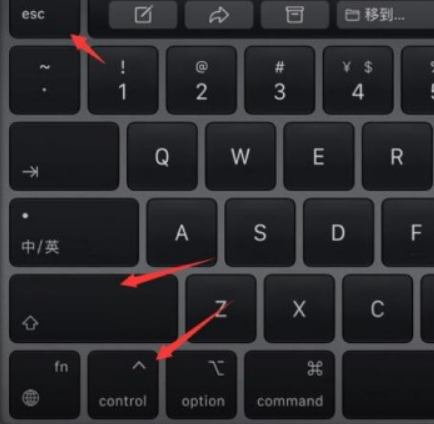 win11电脑屏幕黑屏但鼠标仍可移动的原因和解决方法Jan 30, 2024 am 09:06 AM
win11电脑屏幕黑屏但鼠标仍可移动的原因和解决方法Jan 30, 2024 am 09:06 AM我们在使用win11系统的时候会遇到电脑开机的时候只有鼠标能动,电脑是黑屏的状态,那么win11电脑屏幕黑屏但鼠标能动是怎么回事?详情用户们可以使用ctrl+alt+del快捷键打开任务管理器来进行设置,如果还不行的话可以直接的重装系统,下面就让本站来为用户们来仔细的介绍一下win11电脑屏幕黑屏但鼠标能动的解决方法吧。win11电脑屏幕黑屏但鼠标能动的解决方法解决方法一:1、使用ctrl+alt+del组合快捷键,点击打开任务管理器。4、找到卸载程序,点击查看已安装的更新。解决方法二:1、如果
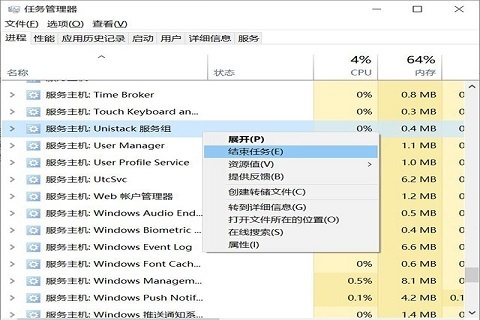 win11系统磁盘占用100%怎么办Feb 04, 2024 pm 01:05 PM
win11系统磁盘占用100%怎么办Feb 04, 2024 pm 01:05 PM用户可以在任务管理器中可以看见各种应用程序的运行状态以及电脑磁盘的占用情况等,那么遇到win11系统磁盘占用100%怎么办呢?下面小编就给大家详细介绍一下win11系统磁盘占用100%解决办法,有需要的小伙伴可以来看一下。win11系统磁盘占用100%的解决方法:方法一:1、按下组合快捷键"Ctrl+Alt+Del",在给出的页面中点击"任务管理器"。2、在新界面中,找到"进程"选项卡下方的"服务主机:unistack服务组"
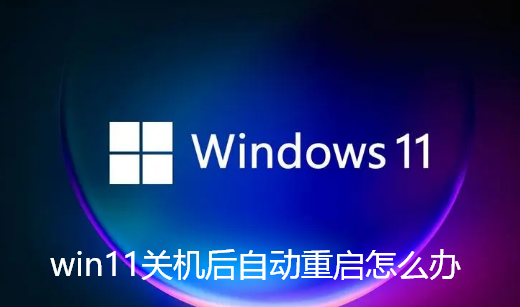 win11关机后自动重启怎么办Jul 01, 2023 pm 04:41 PM
win11关机后自动重启怎么办Jul 01, 2023 pm 04:41 PMwin11关机后自动重启怎么办?最近小编的windows11电脑每次在关机之后,除非把电源直接关了,不然电脑总是自己就进行重启了。这到底是是什么原因,又应该如何解决呢?小编在网上查找了许多教程,终于顺利解决。很多小伙伴不知道怎么详细操作,小编下面整理了win11自动重启频繁解决指南,如果你感兴趣的话,跟着小编一起往下看看吧!win11自动重启频繁解决指南具体步骤如下:1、首先,右键“此电脑”并打开“属性”2、接着打开其中的“高级系统设置”3、然后打开下方启动和故障恢复的“设置”4、随后将“自动重
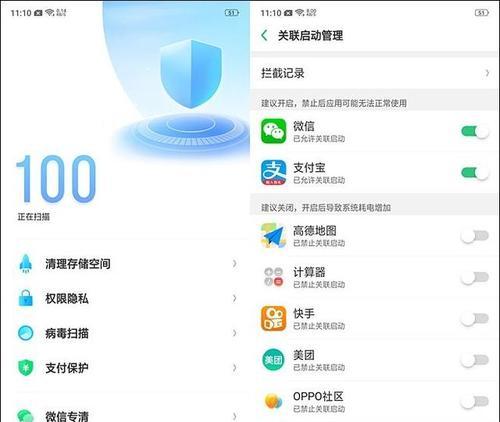 如何恢复出厂设置OPPO手机(简单操作,快速回到初始状态)Feb 03, 2024 am 08:48 AM
如何恢复出厂设置OPPO手机(简单操作,快速回到初始状态)Feb 03, 2024 am 08:48 AM有时我们可能需要恢复手机的出厂设置来解决系统问题或清理个人数据。在使用OPPO手机时,我们可以轻松完成这个操作。下面将详细介绍如何恢复出厂设置OPPO手机。1.准备工作2.了解出厂设置的含义3.备份重要数据4.进入设置界面5.寻找并选择“备份与重置”选项6.选择“恢复出厂设置”7.确认操作8.输入解锁密码或账户密码9.阅读警告提示10.选择要保留的数据11.开始恢复出厂设置12.等待恢复完成13.设置初始配置14.登录OPPO账号15.恢复个人数据1.准备工作:以便在需要时连接到电脑,并准备好U
 如何使用Docker进行容器的故障恢复和自动重启Nov 07, 2023 pm 04:28 PM
如何使用Docker进行容器的故障恢复和自动重启Nov 07, 2023 pm 04:28 PMDocker作为一种基于容器技术的轻量级虚拟化平台,已经被广泛应用于各种场景中。在生产环境中,容器的高可用性和故障自动恢复是至关重要的。本文将介绍如何使用Docker进行容器的故障恢复和自动重启,包括具体的代码示例。一、容器自动重启的配置在Docker中,通过在运行容器时使用--restart选项可以启用容器的自动重启功能。常见的选项有:no:不自动重启。默
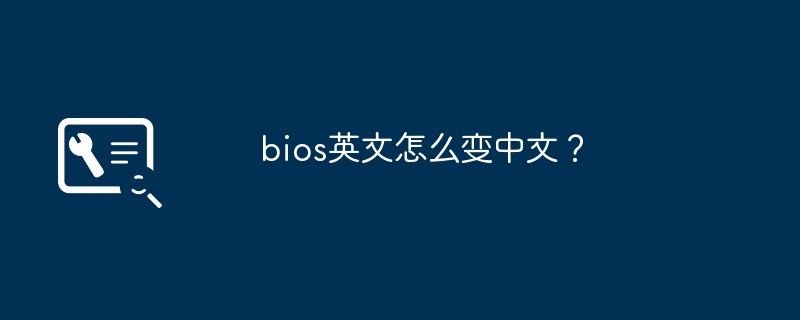 bios英文怎么变中文?Jan 30, 2024 pm 12:03 PM
bios英文怎么变中文?Jan 30, 2024 pm 12:03 PMbios英文怎么变中文?如果你的计算机的BIOS是英文的,你可以尝试以下方法将其变为中文:1.进入BIOS界面。开机时按下Del、F1、F2、F10或其他键(具体键位取决于计算机品牌和型号),进入BIOS界面。2.找到语言选项。在BIOS界面中,找到语言选项,通常在“Advanced”或“Setup”选项中。3.选择中文语言。在语言选项中,找到中文语言选项并选择。如果没有中文选项,可以尝试选择其他语言选项,例如日语或韩语,这些语言选项可能会有中文翻译。4.保存设置并退出。选择中文语言后,按照界面


Hot AI Tools

Undresser.AI Undress
AI-powered app for creating realistic nude photos

AI Clothes Remover
Online AI tool for removing clothes from photos.

Undress AI Tool
Undress images for free

Clothoff.io
AI clothes remover

AI Hentai Generator
Generate AI Hentai for free.

Hot Article

Hot Tools

MinGW - Minimalist GNU for Windows
This project is in the process of being migrated to osdn.net/projects/mingw, you can continue to follow us there. MinGW: A native Windows port of the GNU Compiler Collection (GCC), freely distributable import libraries and header files for building native Windows applications; includes extensions to the MSVC runtime to support C99 functionality. All MinGW software can run on 64-bit Windows platforms.

SublimeText3 English version
Recommended: Win version, supports code prompts!

EditPlus Chinese cracked version
Small size, syntax highlighting, does not support code prompt function

VSCode Windows 64-bit Download
A free and powerful IDE editor launched by Microsoft

ZendStudio 13.5.1 Mac
Powerful PHP integrated development environment





